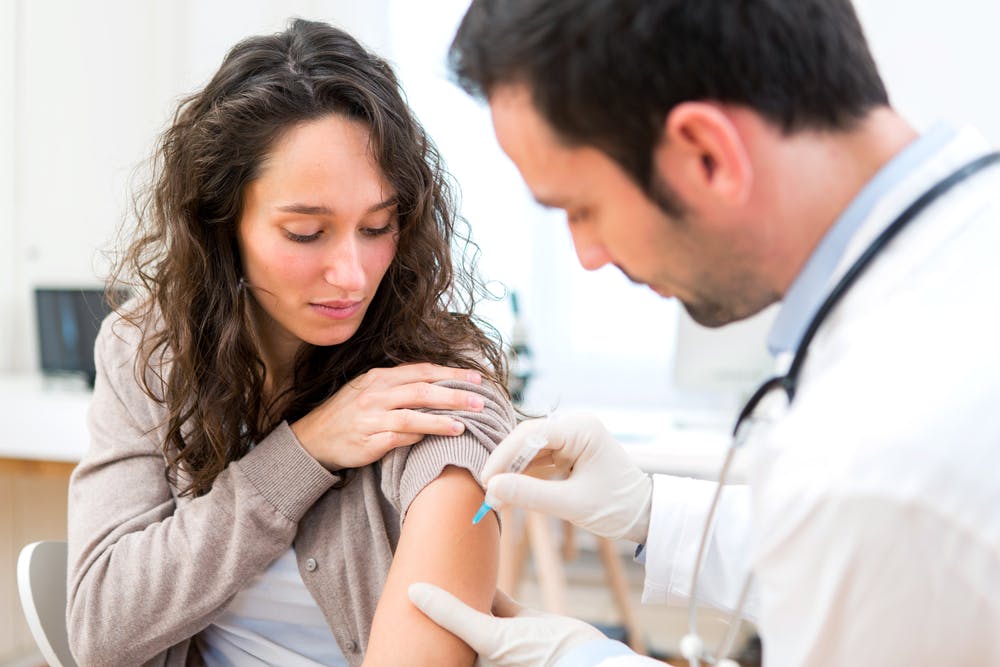The average patient receives a vast array of competing information about vaccines from online searches, social media and discussions with friends. This overload can make it challenging to ensure that the patients in your practice are adequately informed and protected.
Although vaccines are mainly recommended and administered by primary care physicians, OB/GYNs also play a crucial role in advocating for and providing this service. As fewer young people have a regular primary care provider, you may have patients in your practice now who view their gynecologist as their primary provider, lending even more weight to your recommendations.
How to Include Vaccinations in Your Practice
The American College of Obstetricians and Gynecologists (ACOG) recommends that gynecology offices stock and administer commonly recommended vaccines. In states where the practice is allowed, ACOG suggests that practices have standing orders for vaccines. Despite the range of information patients are receiving, the recommendation from a trusted provider still makes a significant difference in their decisions.
At minimum, the recommended vaccines to stock are the current influenza vaccine, tetanus toxoid, reduced diphtheria toxoid, acellular pertussis (Tdap) and human papillomavirus (HPV). The Centers for Disease Control and Prevention examines the recommendations for and adoption rates of three of these vaccines:
- Tdap. The average vaccination rate for adults age 19 and older who have received the vaccine within the past 10 years is 63.4 percent. Tdap should be recommended to pregnant women who have not received the vaccine within the past 10 years to protect their infants.
- Influenza. Flu vaccine coverage remains below 50 percent for adults. Recommending the flu vaccine should be standard practice, especially for older patients, those at high risk and those who are pregnant.
- HPV. The HPV vaccine is gaining in popularity, with increasing rates of vaccination, although the rates are still below where medical professionals would like. Nearly 50 percent of women aged 19 to 26 received at least one dose. This vaccine should be offered and provided in the office for patients of all genders who are younger than 26 and have not yet been exposed to HPV.
How to Discuss Vaccines with Patients
It can be challenging to talk to patients about vaccines; many are worried about possible side effects. Acknowledge those fears, but provide data showing the extremely low rates of adverse events. Many of your patients may already have an understanding of the flu vaccine or a tetanus shot, but an HPV vaccine may still be relatively new for many of them. It is important to discuss the facts with younger patients and their parents.
Be sure to share the prevalence of HPV. Many young people may not realize just how pervasive this virus is; many sexually active patients will be infected with HPV at some time in their lives without ever knowing they have it. About 14 million people become infected with HPV every year, according to the Cleveland Clinic. The virus is a leading cause of cervical cancer; however, the HPV vaccine has been shown to greatly reduce the number of precancerous cervical lesions. The increased adoption of HPV vaccinations is also improving herd immunity to oral HPV infections, according to research published in JAMA.
Take the time to discuss vaccines with all your patients and review their history to ensure they are up to date. Whenever possible, stock and be willing to administer commonly needed vaccines in the office. Being able to receive the shot on the same day greatly improves the chances of adoption.
Many patients may need some time to consider, so it is a good idea to follow up even after a patient declines at first. Discussing vaccines frequently and candidly goes a long way to improving the health of your patients.



